- News
- Reviews
- Bikes
- Components
- Bar tape & grips
- Bottom brackets
- Brake & gear cables
- Brake & STI levers
- Brake pads & spares
- Brakes
- Cassettes & freewheels
- Chains
- Chainsets & chainrings
- Derailleurs - front
- Derailleurs - rear
- Forks
- Gear levers & shifters
- Groupsets
- Handlebars & extensions
- Headsets
- Hubs
- Inner tubes
- Pedals
- Quick releases & skewers
- Saddles
- Seatposts
- Stems
- Wheels
- Tyres
- Tubeless valves
- Accessories
- Accessories - misc
- Computer mounts
- Bags
- Bar ends
- Bike bags & cases
- Bottle cages
- Bottles
- Cameras
- Car racks
- Child seats
- Computers
- Glasses
- GPS units
- Helmets
- Lights - front
- Lights - rear
- Lights - sets
- Locks
- Mirrors
- Mudguards
- Racks
- Pumps & CO2 inflators
- Puncture kits
- Reflectives
- Smart watches
- Stands and racks
- Trailers
- Clothing
- Health, fitness and nutrition
- Tools and workshop
- Miscellaneous
- Buyers Guides
- Features
- Forum
- Recommends
- Podcast
£649.00
VERDICT:
With performance somewhere between 'tourer' and 'shopper', the Cube Touring Pro is a fine leisure and commuting bike
Weight:
17,260g
Contact:
At road.cc every product is thoroughly tested for as long as it takes to get a proper insight into how well it works. Our reviewers are experienced cyclists that we trust to be objective. While we strive to ensure that opinions expressed are backed up by facts, reviews are by their nature an informed opinion, not a definitive verdict. We don't intentionally try to break anything (except locks) but we do try to look for weak points in any design. The overall score is not just an average of the other scores: it reflects both a product's function and value – with value determined by how a product compares with items of similar spec, quality, and price.
What the road.cc scores meanGood scores are more common than bad, because fortunately good products are more common than bad.
- Exceptional
- Excellent
- Very Good
- Good
- Quite good
- Average
- Not so good
- Poor
- Bad
- Appalling
It's called 'touring', yet it looks like a shopper. Expect performance somewhere in between and you'll find the Cube Touring Pro is stable, surefooted and has a surprising turn of speed. Probably most important of all, it's very, very comfortable. In fact, with its rear rack, dynamo lights, kickstand, mudguards and chain case, it's a lifestyle bike that's truly easy to live with. The only slight downside comes in terms of cost: unusually for Cube, the Touring Pro is a fair deal but not a bargain.
- Pros: Very relaxed and comfy ride; surprisingly impressive under power; fulsome spec
- Cons: Fairly heavy, not particularly cheap, short front mudguard
Because of the nature of the Touring Pro's geometry, the front end feels tall, which provides a high riding position that is good for a commanding view of the way ahead and gives you an enhanced road presence. The slight downside is that communication between the wide handlebar and front wheel feels a little long-distance at first, and initially you may find the Touring Pro just a little unresponsive. This calms down with use and actually improves with speed.
> Find your nearest dealer here
And speed isn't out of the question. This may look like a relaxed cruiser but it boasts great balance, so out-of-the-saddle efforts aren't impossible. When it comes to climbing, you'd have to be built like Roger Ramjet to get any kind of weight down over the front, but power transfer is good and on descents there's a surprising element of playfulness.
Despite our summer of sun, I was lucky enough – if that's the right phrase – to test this bike in typical British commuting weather and can report that the Touring Pro's surefootedness extends to wet roads. While the high position does mean your centre of gravity is equally lofty, the wide tyres and benign nature of the frame makes for stable cycling.
How does that 'Touring Pro' label work out? Well this is far more of a trekker than a tourer, so it will happily cope with a spot of towpath or credit card touring. But the position is just a little too upright to handle crossing continents at any kind of consistent pace.
Frame and fork
In truth, our test bike looked nothing like the kind of bike British riders would call a tourer. Cube makes two other versions of the Touring Pro – one with a level top tube, one with a more modern 'trapeze' step-through model – which get much nearer the traditional touring mark. This version is built around more of a 'shopper' or 'Dutch bike' design (Cube actually calls it 'Easy Entry').
The great Mike Burrows once told me that the best way to design a shopper bike is to use just a large single down tube with a bit of a bend in it. Cube hasn't strayed far from that ideal here. There is a bit of buttressing at the head tube and seat tube junctions, but essentially it's a beautifully simple, swooping, double-butted aluminium single tube.
Equally elegant are the seatstays and chainstays, where svelte tubing is used throughout. Considering the type of bike, the rear triangle is actually quite compact, which is probably why power delivery is so unexpectedly impressive. Power transfer might not be top of a typical shopper bike rider's concerns, but this Touring Pro is only aesthetically a shopper – its ride quality and specification provide a far wider range of talents. Internal cable routing for the gear cables is a suitably refined touch, too.
Finishing off the frame and fork package is an SR Suntour NEX suspension fork with 50mm of travel (the other two Touring Pro versions come with 63mm-travel forks). In conjunction with the other measures designed to promote comfort, the fork certainly does a decent job of keeping the front end untroubled by irregular road surfaces. Rough roads are easily smoothed out and the Touring Pro can also handle moderate off-road routes, such as parkland paths and gravel tracks.
Gearset and brakeset
The 2018 Touring Pro on test features Shimano Altus shifters and derailleurs, teamed with a Shimano Tourney triple chainset (the 2019 model has an Acera rear derailleur). Everything works fairly securely, although gear changes can be a little clunky at times. The 48x36x26T triple is combined with a 12-32T 8-speed cassette, meaning there are plenty of options and a gearing range that goes low enough to tackle hills, even with some weight attached to the rear rack.
Proof that disc brakes are now ubiquitous comes in the fact that it's no longer surprising to see them even on a looping down tube leisure machine. Assuming you use the Touring Pro to its full potential as a daily workhorse and carry a bit of weight all year round, the Tektro M285 hydraulic discs will serve you right, especially in poor weather. They're not perfect, though, and a heavily laden Touring Pro on a damp descent should still be ridden with caution – these Tektros will scrub off speed surely enough, but there's not a lot of outright power.
Wheels and finishing kit
On models lower down the pecking order, Cube has long fitted its bikes with own-brand (really Alex-rimmed) wheels, and often they're quite a nice surprise. These are no exception, rolling smoothly and – combined with the whopping 40mm Schwalbe Spicer Active tyres – they provide a fair bit of cushioning, too. There's also a Shimano dynamo front hub, which powers nice 'n' bright Trelock lights front and back.
More comfort comes in the well-padded Selle Royal Nuvola saddle – not by any means a perch for speed demons but for urban spins, it's an armchair ride. This approach is reflected in the shape of the handlebar, which is nicely swept back with a bit of rise and further promotes that relaxed, upright riding position (the other two Touring Pro models come with a Cube 680mm Ride Trial bar).
The grips are a good shape and made of rubber that is sturdy yet forgiving enough, and the handlebar position can be tweaked to some extent with the adjustable stem. This was a bit stiff to change initially but it does offer the opportunity to get your position just right without any further purchases.
In fact, Touring Pro owners won't be returning to their local bike dealers for much, as this model comes complete with the kind of accessories you'd probably want to fit. I've already mentioned the dynamo lights, but you can add to the list SKS mudguards, a clear chain case, a Racktime AddIt rear rack and a kickstand.
Combined, it's a fairly fulsome package with only the lack of a frame lock marking it out from fully accessorised rivals. Consequently, the all-up weight of slightly more than 17kg seems justified. It's certainly not light, but not entirely unwieldy, either.
Value and conclusion
So the Touring Pro is a very good bike to ride, with a lot of useful extras and a decent enough selection of components. What's not to like? For me, as a tester, not much. But what if I actually wanted to buy this bike? Then I'd have to pay £649 for the pleasure, and that's quite a lot of money. So my one gripe with the Touring Pro is that it seems just a little expensive, which is not a criticism normally levelled at Cube.
> Buyer's Guide: 9 of the best hybrid bikes
In terms of rivals, the Scott Sub Cross 40 has a very similar basic spec, albeit without the rack, kickstand, mudguard and lights, and retails for £100 less. Or there's the Ridgeback Avenida 21 at £549.99, which is a very similar looking bike with all the same accessories, yet features a Tourney gearset and V-brakes. Is the Cube package worth the extra? That's for buyers to decide. All I can say for sure is, there's certainly a lot to like about the way it rides.
Verdict
With performance somewhere between 'tourer' and 'shopper', the Cube Touring Pro is a fine leisure and commuting bike
road.cc test report
Make and model: Cube Touring Pro
Size tested: 49cm
About the bike
List the components used to build up the bike.
This is the spec for the 2018 model, 2019 models are equipped with an Acera rear derailleur.
Frame: Cube Superlight Trekking Comfort double-butted aluminium
Fork: SR Suntour NEX 50mm suspension
Wheels: Cube SX20 rims on Cube rear hub and Shimano front dynamo hub
Tyres: Schwalbe Spicer Active 40mm
Shifter: Shimano Altus
Front derailleur: Shimano Altus
Rear derailleur: Shimano Altus
Chainset: Shimano Tourney 48x36x26T
Cassette: Shimano HG-200 11-32T
Chain: KMC Z51
Bottom bracket: Square taper
Brakeset: Tektro HD-M285 hydraulic disc
Saddle: Selle Royal Nuvola
Seatpost: Cube Performance 27.2mm
Handlebar: Cube Comfort Shape Bar
Stem: Satori Up2 Plus adjustable
Headset: FSA No.10 aheadset semi-integrated
Grips: Cube Natural Fit Comfort
Extras: Trelock front and rear dynamo lights, clear chain case, SKS Black Shiny mudguards, Racktime AddIt rear rack.
Tell us what the bike is for and who it's aimed at. What do the manufacturers say about it? How does that compare to your own feelings about the bike?
Cube says: "The Cube Touring Pro has two standout features. First, of course, there's its high quality aluminium frame. Light, comfortable and efficient for even long days in the saddle, it'll win you over the moment you turn the pedals for the first time. Second, there's its powerful hydraulic disc brake system. Why did we select disc brakes for our versatile tourer? Simple: because they slow you down safely and reliably, whatever the weather's doing. And that's an important consideration, whether you're an everyday rider braving the traffic on the way to work or an occasional tourer, exploring at the weekends. Combined with the reliable 24 speed Shimano transmission, a full complement of mudguards, rear luggage carrier and lights and a built-in lighting system, it's the perfect companion for many, many miles of riding pleasure."
Frame and fork
Overall rating for frame and fork
8/10
Tell us about the build quality and finish of the frame and fork?
The frame is very well made with a simple curved down tube, featuring a bit of buttressing at the head tube and seat tube junction, and a compact rear triangle. The SR Suntour NEX suspension fork has only 50mm of travel and no lockout but complements the frame nicely.
Tell us about the materials used in the frame and fork?
Double-butted aluminium for the frame.
Tell us about the geometry of the frame and fork?
Typical 'Dutch' or 'shopper' bike geometry with a high, upright riding position.
How was the bike in terms of height and reach? How did it compare to other bikes of the same stated size?
Typical for this kind of bike.
Riding the bike
Was the bike comfortable to ride? Tell us how you felt about the ride quality.
Excellent comfort and ride quality. Road handling was secure.
Did the bike feel stiff in the right places? Did any part of the bike feel too stiff or too flexible?
Stiff enough, but really this bike is about relatively sedate cruising. That said, the rear triangle was surprisingly responsive when it came to power transfer.
How did the bike transfer power? Did it feel efficient?
Yes, impressively so for a bike of this nature. Getting up to speed was never a problem.
Was there any toe-clip overlap with the front wheel? If so was it a problem?
No.
How would you describe the steering? Was it lively neutral or unresponsive? A little remote initially, but easy to adapt to.
Tell us some more about the handling. How did the bike feel overall? Did it do particular things well or badly?
The Touring Pro was surprisingly impressive in terms of handling and actually felt fairly capable at speed.
Which components had the most effect (good or bad) on the bike's comfort? would you recommend any changes?
Saddle was good, as were the 40mm Schwalbe Spicer tyres. Very little reason to suggest changing anything for comfort reasons.
Which components had the most effect (good or bad) on the bike's stiffness? would you recommend any changes?
The adjustable stem introduced a slight compromise on stiffness, but otherwise you don't really want this bike to be any stiffer.
Which components had the most effect (good or bad) on the bike's efficiency? would you recommend any changes?
The Shimano Altus/Tourney drivetrain worked well enough. It's never going to be a standout factor, but capable for this job.
Rate the bike for efficiency of power transfer:
7/10
Surprisingly good.
Rate the bike for acceleration:
6/10
Got up to speed well.
Rate the bike for sprinting:
5/10
The upright geometry doesn't encourage too much sprinting, but you can get out the saddle a bit.
Rate the bike for high speed stability:
9/10
Impressively stable at speed.
Rate the bike for cruising speed stability:
9/10
This is a bike designed for cruising.
Rate the bike for low speed stability:
7/10
High position feels just a little vague at times.
Rate the bike for flat cornering:
5/10
This is not a bike built for taking corners at great speed.
Rate the bike for cornering on descents:
5/10
Overall stability means cornering on descents is quite fun. There'll be no leaning over into bends, though.
Rate the bike for climbing:
4/10
Low gearing helps with climbing but this is a relatively heavy bike.
The drivetrain
Rate the drivetrain for performance:
6/10
Does the job with minimum fuss, but performance isn't super-refined.
Rate the drivetrain for durability:
7/10
Should last and last.
Rate the drivetrain for weight:
5/10
Not a drivetrain for the weight conscious but not a millstone, either.
Rate the drivetrain for value:
6/10
Decent performance at a decent price.
Tell us some more about the drivetrain. Anything you particularly did or didn't like? Any components which didn't work well together?
Gear changes were occasionally a little clunky, but the drivetrain largely performed fairly innocuously.
Wheels and tyres
Rate the wheels for performance:
7/10
I was impressed – they rolled smoothly and performed well.
Rate the wheels for durability:
7/10
Simple and long lasting.
Rate the wheels for weight:
5/10
Not featherweight hoops but they don't really need to be.
Rate the wheels for comfort:
10/10
Combined with the 40mm Schwalbe Spicer tyres, comfort was excellent.
Rate the wheels for value:
7/10
Decent supplied wheels with disc brake compatibility and a Shimano dynamo hub at the front.
Tell us some more about the wheels.Did they work well in the conditions you encountered? Would you change the wheels? If so what for?
Worked very well in all conditions – no need to change them on a bike such as this.
Rate the tyres for performance:
9/10
Good grip, even on wet roads, but happy to roll at speed and very comfortable.
Rate the tyres for durability:
8/10
So far so good.
Rate the tyres for weight:
6/10
No heavier than expected.
Rate the tyres for comfort:
10/10
Really excellent comfort levels.
Rate the tyres for value:
8/10
Good value with a wide range of positive attributes.
Tell us some more about the tyres. Did they work well in the conditions you encountered? Would you change the tyres? If so what for?
Excellent tyres for this type of bike, providing comfort and grip without demanding big concessions on speed.
Controls
Rate the controls for performance:
7/10
Good if at times a little idiosyncratic – for example, the swept-back handlebar is an acquired taste (although, I have to confess I enjoyed using it).
Rate the controls for durability:
7/10
Should be fine, although the adjustable stem introduces an added complication.
Rate the controls for weight:
5/10
Not light.
Rate the controls for comfort:
8/10
I particularly enjoyed the swept-back bar and supportive but forgiving grips.
Rate the controls for value:
7/10
Pretty good.
Tell us some more about the controls. Any particularly good or bad components? How would the controls work for larger or smaller riders?
Shopper-style bike controls tend to be fairly specific but the Touring Pro's components did a good job of offering a halfway house between a traditional relaxed shopper and a (slightly) more aggressive hybrid.
Anything else you want to say about the componentry? Comment on any other components (good or bad)
The included extras – mudguards, chain case, dynamo lights, kickstand and rear rack – are all welcome and practical additions.
Your summary
Did you enjoy riding the bike? Very much.
Would you consider buying the bike? Possibly
Would you recommend the bike to a friend? Yes
Rate the bike overall for performance:
9/10
Rate the bike overall for value:
6/10
Use this box to explain your overall score
The Cube Touring Pro is a comfortable and efficient bike with a surprising level of performance that belies its looks. It's not an out-and-out tourer, but it's far more than a shopper. The only minor downside is the price. Considering Cube is normally ahead of the market on value, the cost of the Touring Pro is a slight disappointment.
About the tester
Age: 39
I usually ride: Islabikes Beinn 29 My best bike is: 25-year-old Dawes Galaxy
I've been riding for: Over 20 years I ride: Most days I would class myself as: Experienced
I regularly do the following types of riding: commuting, touring, sportives, general fitness riding, mountain biking, leisure
Latest Comments
- Rapha Nadal 55 min 43 sec ago
Surely a quick prayer would sort out the issue?
- leedorney 57 min 11 sec ago
£169 = what a bargain 😉
- hawkinspeter 58 min 19 sec ago
I'm surprised that they didn't get the police involved for theft of the van. Maybe the terms and conditions for using the car park state that you...
- mdavidford 1 hour 14 min ago
Er, yes - it says so in the article.
- chrisonabike 1 hour 41 min ago
Only wait until wrinkles give your scalp enough slack to slide on your skull and absorb that energy!
- Jimthebikeguy.com 3 hours 36 min ago
People show up to a sportive, and go out doing what they love.
- don simon fbpe 3 hours 30 min ago
I think most people are over it, then he rears his ugly little head to remind everyone of what an obnoxious twat he really is. It appears that...
- Jbnuts 6 hours 39 min ago
I did similar. I found a Mapei-finished C59 disc frameset online and proceeded to build what I hoped would be a fantastic Colnago. It turned out...
- stonojnr 10 hours 6 min ago
exactly, thats my issue, how does knowing the speed, then change the perspective of a close pass ?...





































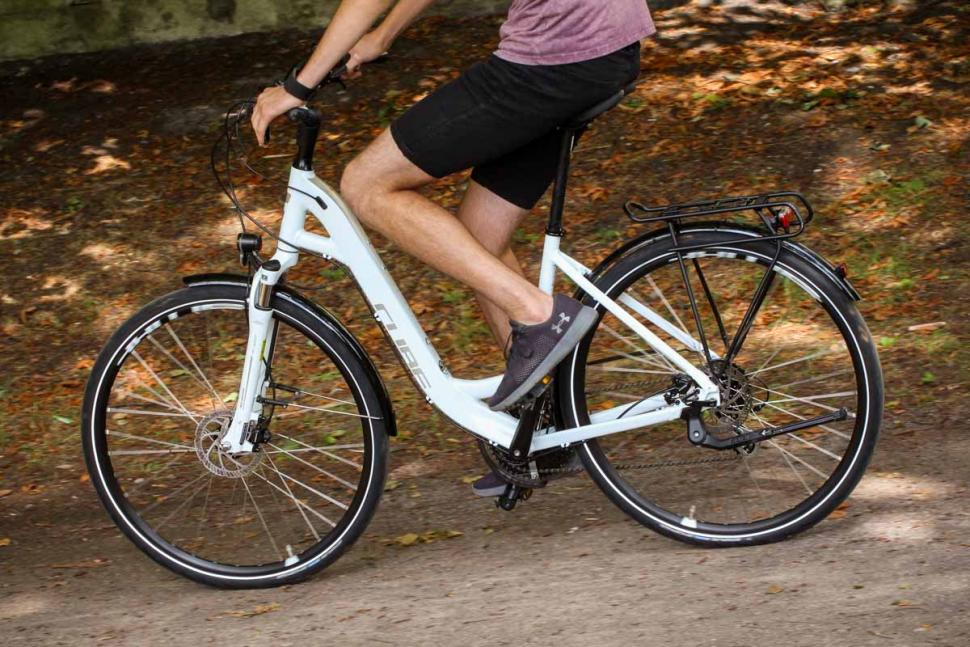
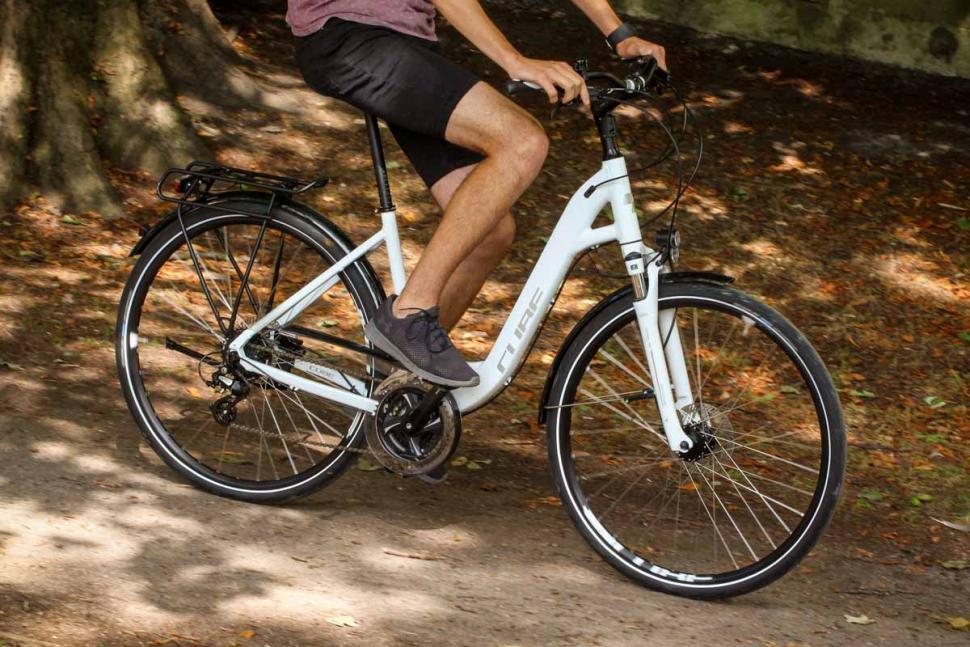

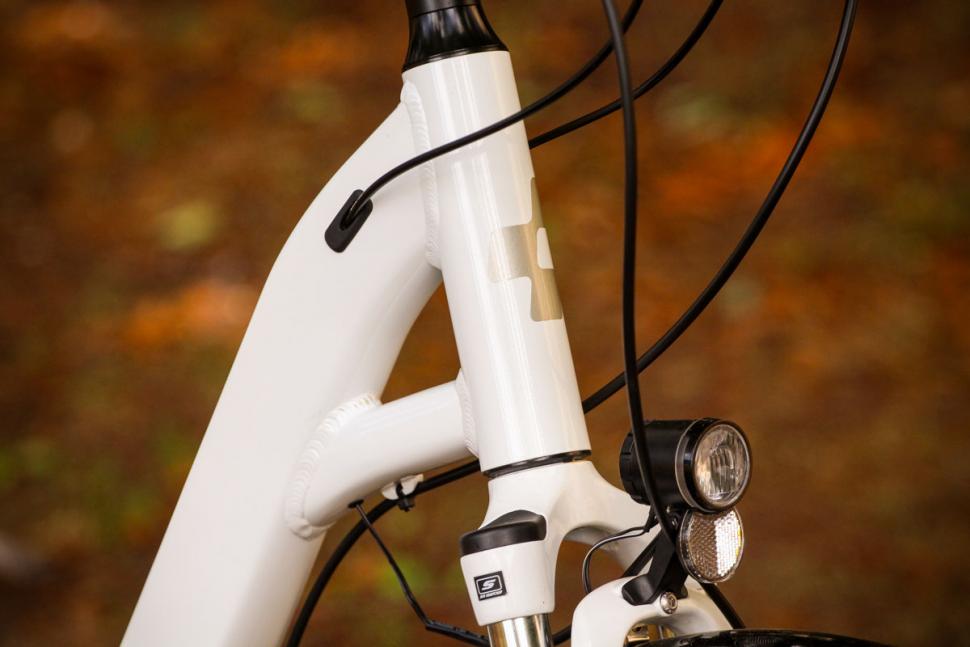
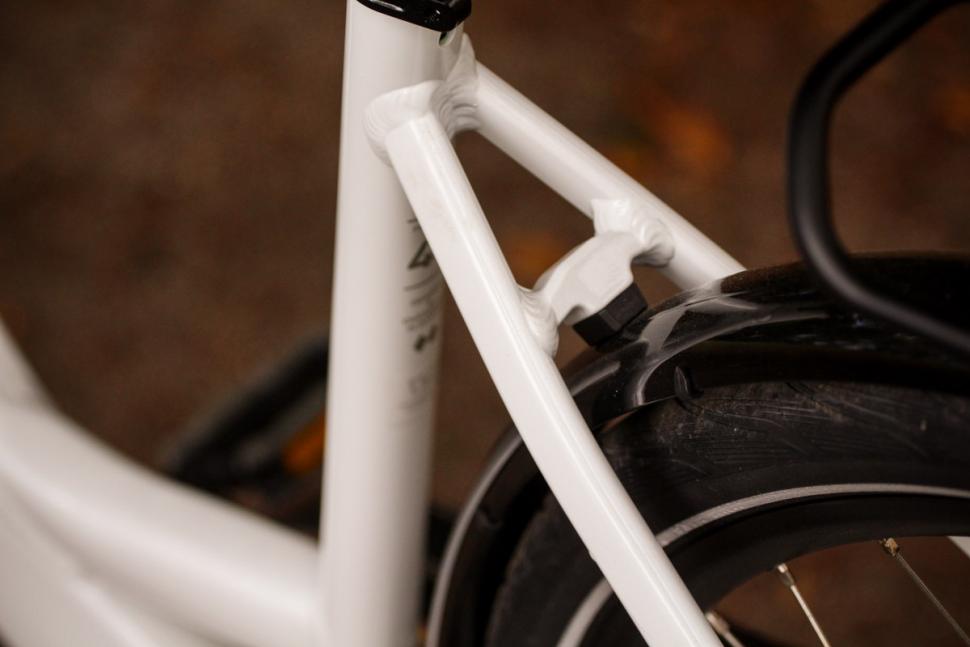
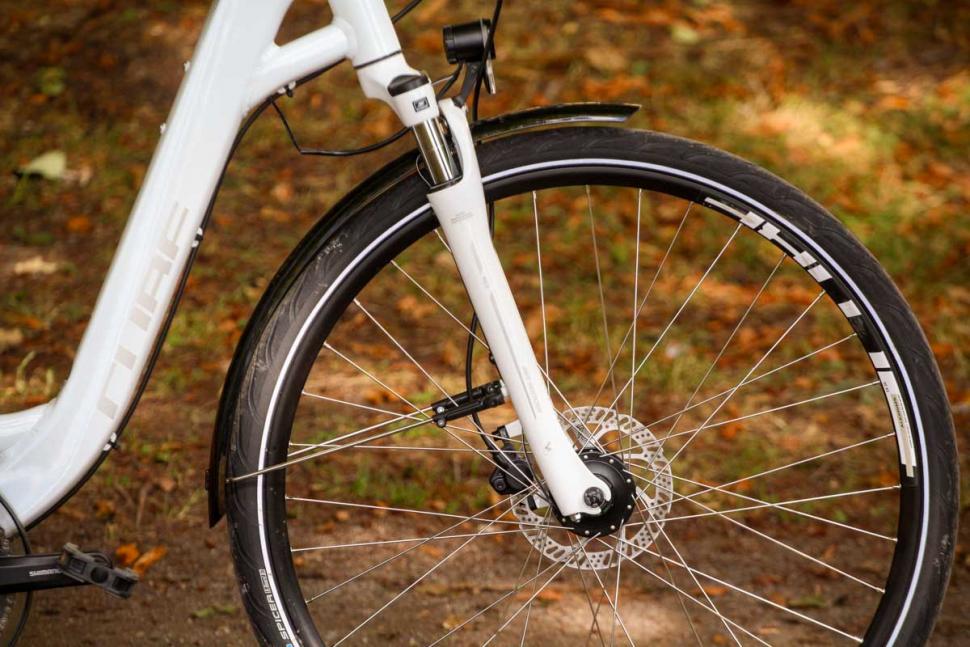
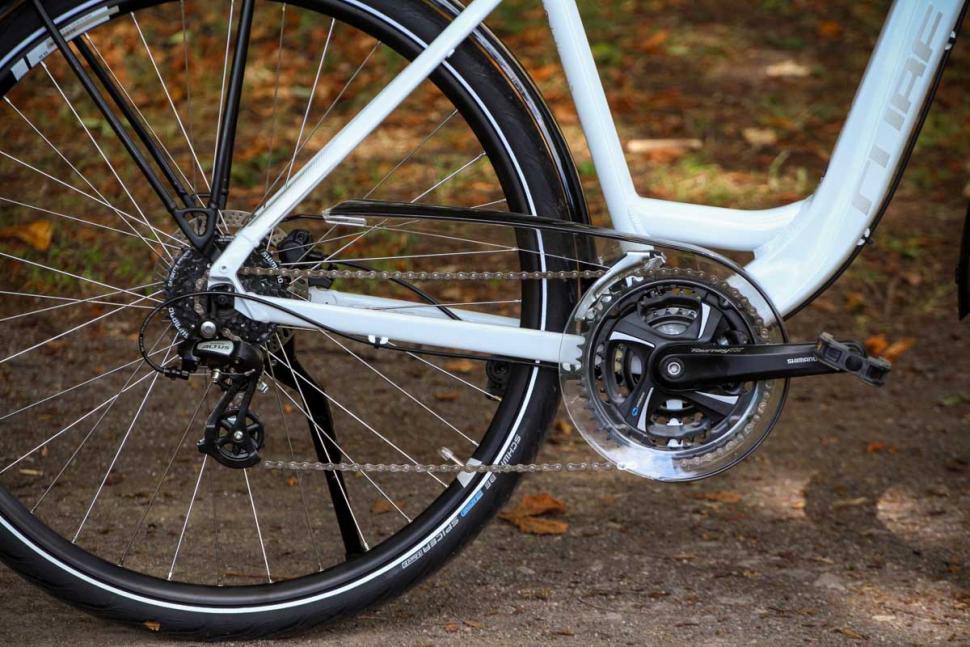
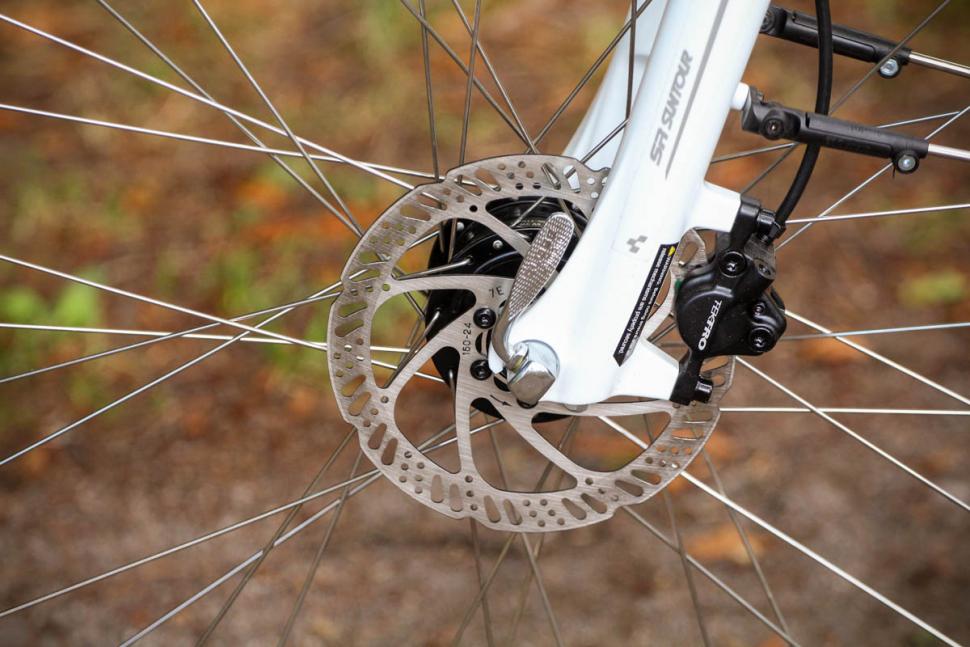
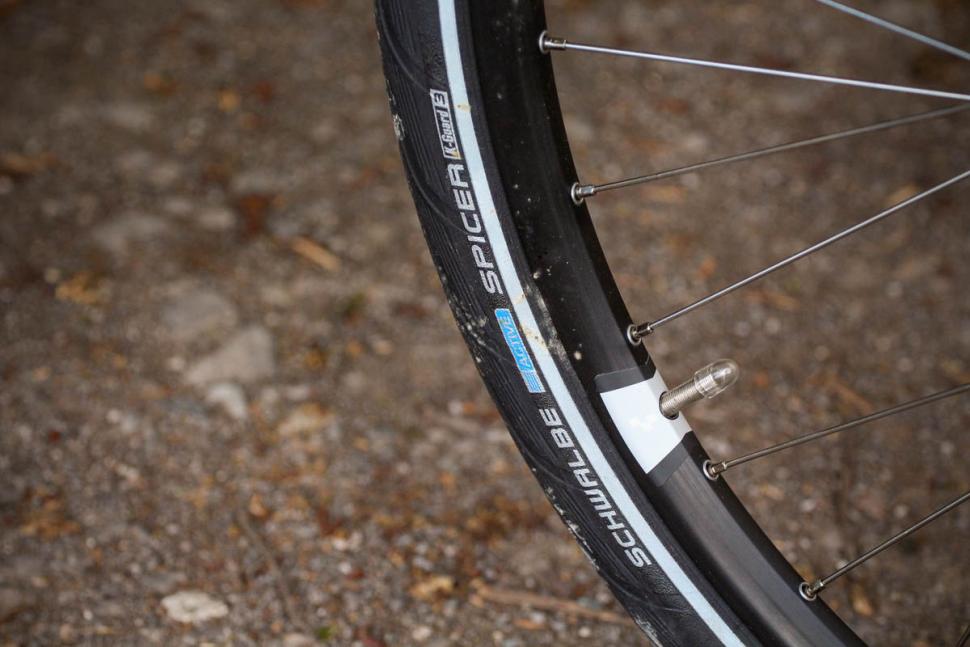
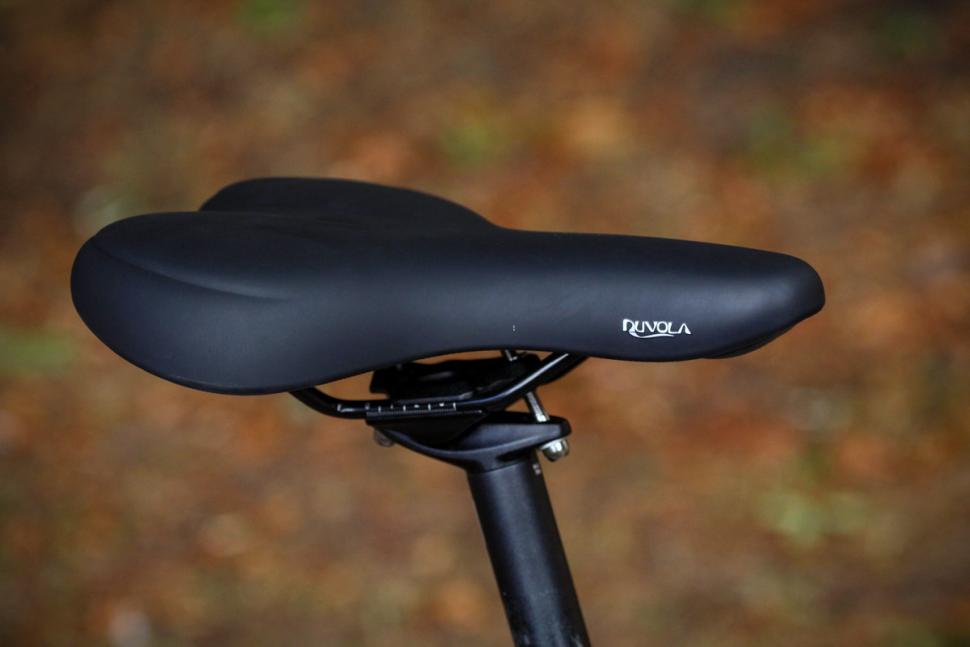
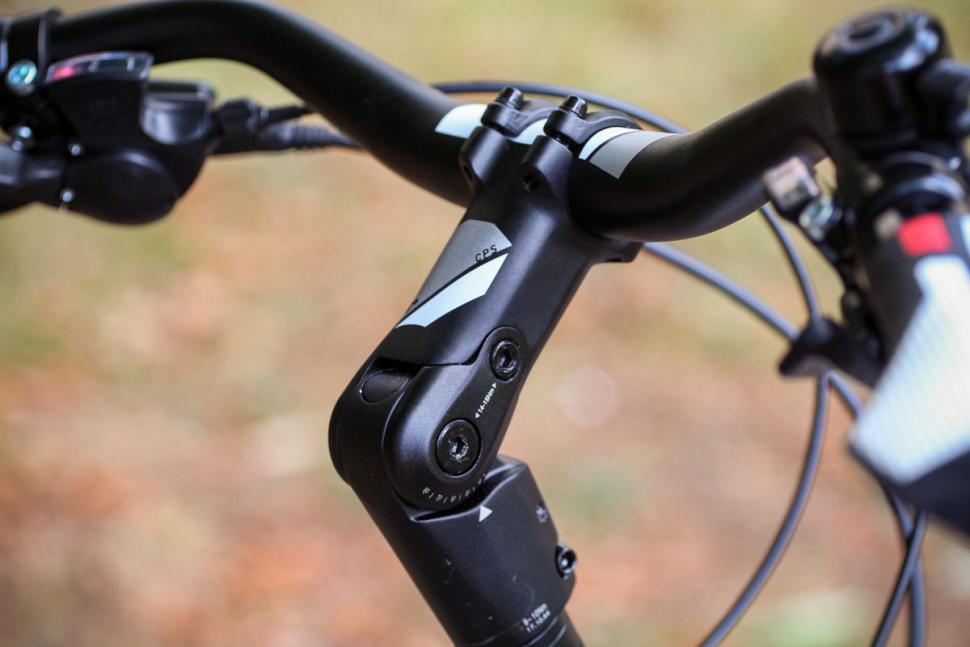
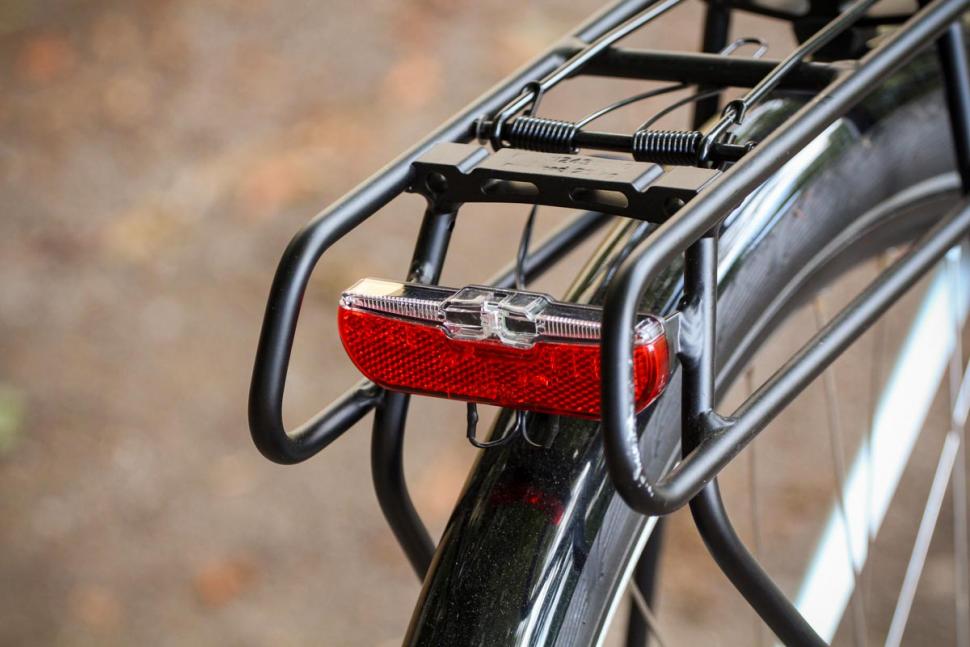
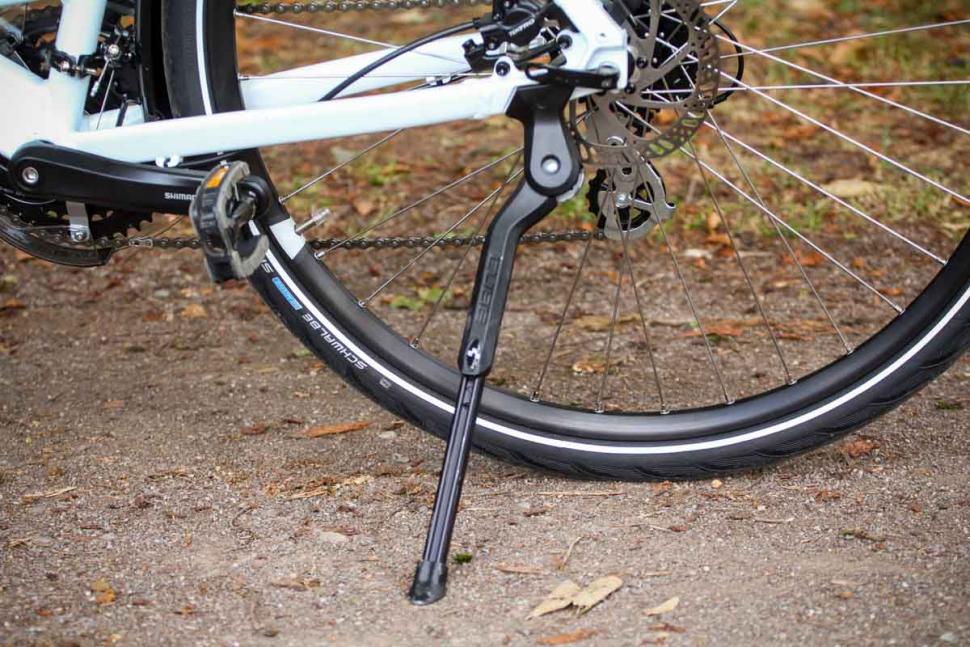
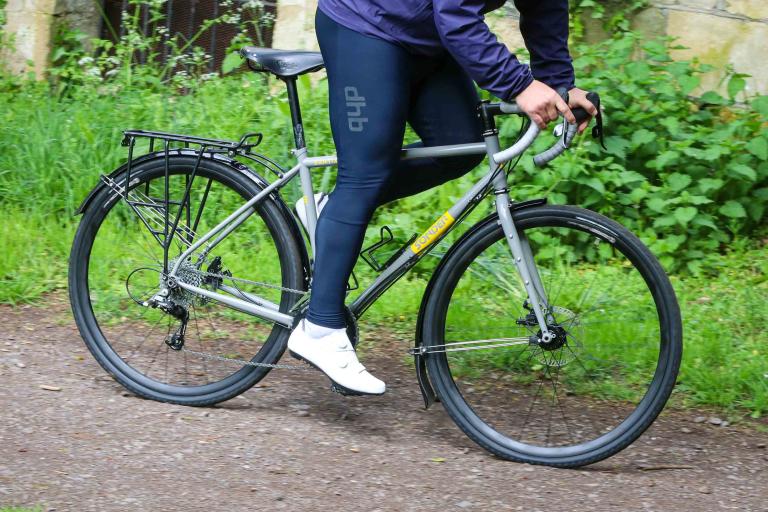
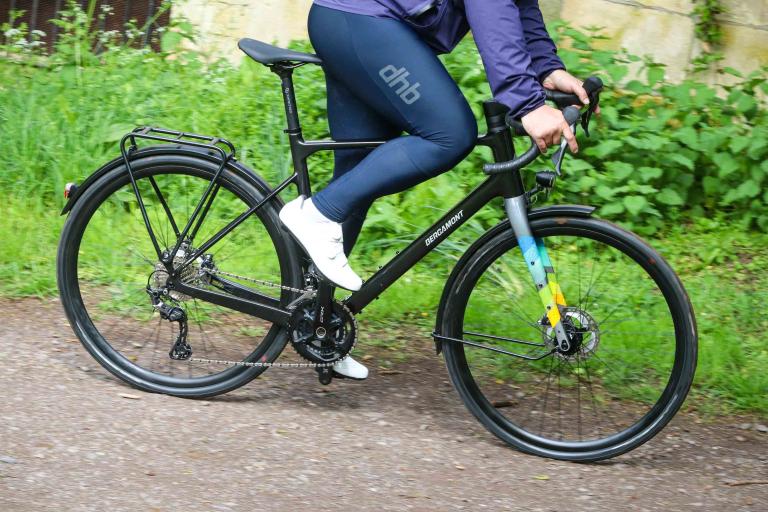
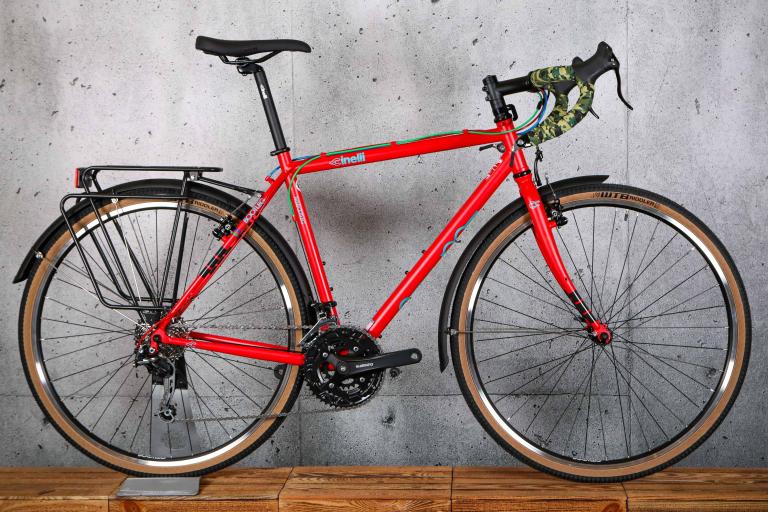
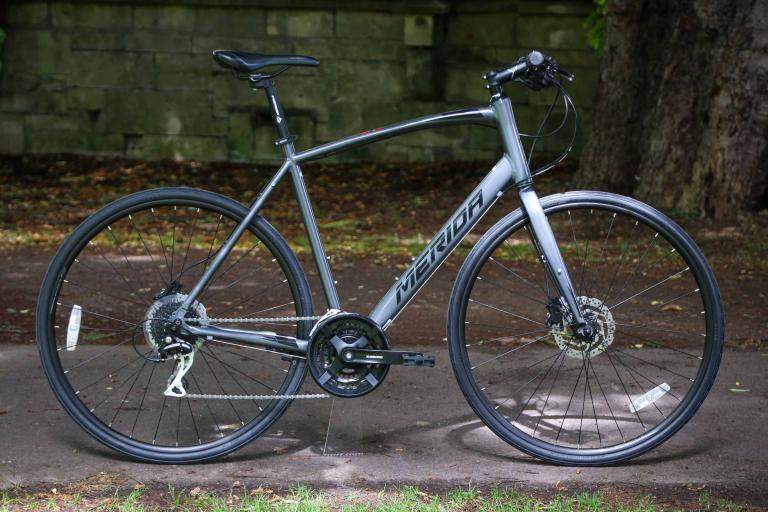
Add new comment
4 comments
Looks small for him
Don't understand the justification for saying this is expensive. Adding all the included accessories to the Scott would add up to far more than £100 and the Ridgeback has a worse spec. This bike seems like solid value to me.
Aero wheel upgrade?
And surely it's a ladies bike?
Don't like the look of the gears. Is Dura-Ace an option?